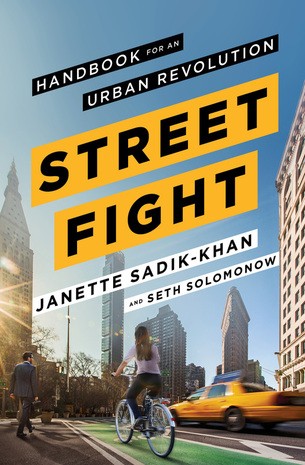
It’s a pretty standard part of any cycleway debate to have someone say “But we’re not Amsterdam, people are never going to bike here”
Here I review Pete Jordan’s In the City of Bikes, an immigrant American’s view of biking in Amsterdam, and Janette Sadik Khan’s Streetfight, about her battle to turn New York into the Amsterdam of the US.
Jordan moved to Amsterdam because he was entranced by Amsterdam bike culture. One of his first steps (after acquiring a bike of his own) was to purchase a traditional omfiets bike for his soon to arrive girlfriend. After lovingly painting her initials on the fender, and taking it for a test cruise to a local bakery, he discovered the dark side of Amsterdam bike culture: unlocked bikes effectively have sign on them “FREE BIKE”, and within minutes of leaving it unlocked, it was gone.
Bike theft gives rise to a unique Amsterdam profession: Bike Fishermen, who retrieve dumped bikes from the canals and onsell them. While we think of Amsterdam and Copenhagen as similar cycling cities, Jordan visited Copenhagen after some time in Amsterdam. He was shocked at the differences - many Copenhagen bikes only had one lock, and he even saw unlocked bikes on the streets. The Danes are much more law abiding on bicycles - they don’t talk on cellphones, or “dink” - carry a passenger on the carrier. Some even wear bicycle helmets. In the end he decides that he prefers the anarchy of Amsterdam to the conformity of Copenhagen.
Jordan interleaves his Amsterdam experienceswith extensive research into the history of Dutch cycling. In the 1890s large indoor riding schools vied for the right to train the first generation of cyclists, covering issues that somehow have been missed in our modern Pedal Ready curriculum “Men learned how to steer with one hand while properly tipping their hats with the other”. In modern Amsterdam, anarchy is a stronger theme than hat tipping etiquette. Jordan traces the history of the 1960s anarchist Provo movement’s White Bikes, showing that the White Bike scheme was was much more effective as an idea than in practice - there were actually very few White Bikes, and these were appropriated quickly by Amsterdammers with a firm view of personal rather than public property. However the White Bikes were the inspiration for today's successful public bike schemes.
Of course, Amsterdam did go through a period when cars were gaining the ascendancy. In the 1970s mass protest rides on bakfiets cargo bikes blocked the streets to cars. A group calling itself the “Car Elimination Service” plastered vehicles with stickers reading “I am an air polluter”. But a political shift saw a council that approved a traffic plan that “must strongly focus on elevating the bicycle climate”. And the rest is history...

On the other side of the Atlantic, Janette Sadik-Khan took up the role of Transportation Commissioner with carte blanche from Mayor Michael Bloomberg to turn New York into a walking and cycling friendly city
She may not have made Manhattan the Amsterdam of the US, but New York today is very different from the car oriented metropolis created by the legendary traffic engineer Robert Moses.
In the 1950s and 1960s, Robert Moses pushed the construction of freeways as the future of New York Transportation. He met his match in Jane Jacobs, a community activist who led opposition to resulting destruction of communities.
As in Island Bay, local New York communities were often unsympathetic to change, ironically in some cases co-opting the heritage of Jane Jacobs. Sadik-Khan, whose Tatar ancestors changed the face of Asia, says “When you push the status quo, it pushes back, hard”. She found it was more effective to “use the language of choices and safety when working with local communities”. She also emphasised “rapid-fire projects” - putting in a bike lane or walking area on a temporary basis, using cheap materials: paint, planters, beach chairs and surplus stone; promising to remove or fix it if it didn’t work. “Had we... answered every cabbie’s doubt and refuted every newspaper columnist's armchair analysis, it would have taken five years just to break ground”.
By narrowing lanes and rearranging road space, Sadik-Khan’s planners reclaimed space for cyclists and pedestrians. Better intersection design improved traffic flow for all modes.In Times and Madison Squares, the replacement of traffic lanes by pedestrian plazas brought new life to the city - perhaps a lesson for Jervois Quay in Wellington. The battle to implement bike lanes in Manhattan’s Grand Street had parallels with Wellington’s Island Bay. “A mayoral candidate, sensing an easy political win, declared ‘I’m in favour of bike lanes but you can’t put bike lanes in without speaking to the community’”. In fact, as in Island Bay, there had been community consultation.
An important theme of Streetfight is that making a cycle friendly city isn’t just about bike lanes: creating a people friendly streetscape, with street furniture, plazas etc, should be the overall vision.
Will the cities of Aotearoa become the Amsterdams of the South Pacific? Jordan gives us an idea of what they might feel like; Sadik-Khan gives us a road map to get there.
Alastair Smith
Jordan, Pete (2013) In the City of Bikes: The Story of the Amsterdam Cyclist. New York: Harper Collins.
Sadik-Khan, Janette; Solomonow, S (2016). Streetfight: handbook for an urban revolution. New York: Viking.
